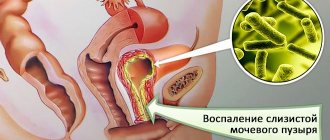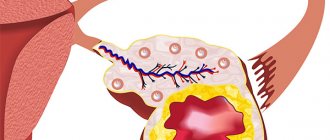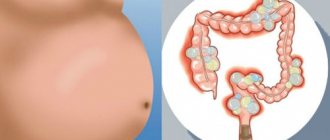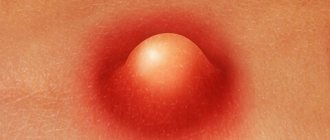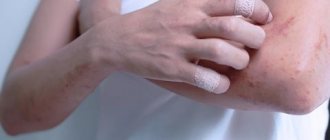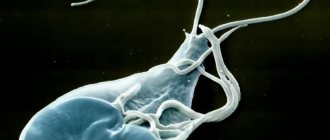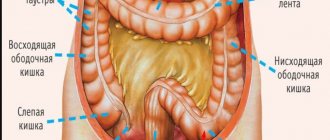Description
Vasomotor rhinitis is a chronic disease of the nasal mucosa, resulting from impaired vascular tone and manifested by impaired nasal breathing.
Breathing through the nose helps cleanse, moisturize and warm the inhaled air. With vasomotor rhinitis, due to nasal congestion, a person is forced to breathe through the mouth, which can lead to the development of inflammatory diseases such as laryngitis, tracheitis, bronchitis, and pharyngitis. In addition, when breathing through the mouth, the body receives an insufficient amount of oxygen necessary to saturate the tissues, which leads to changes in the gas composition of the blood.
The cause of the development of vasomotor rhinitis is a violation of the regulation of the tone of blood vessels located in the nasal cavity in the submucosal layer. Normally, a person experiences a change in the blood supply to the nasal mucosa under the influence of changes in the temperature and humidity of the inhaled air. Various neurovegetative disorders lead to changes in vascular tone, dilation of blood vessels, swelling of the mucous membrane of the nasal cavity, resulting in the main symptom of the disease - nasal congestion.
The main factors contributing to the development of vasomotor rhinitis are:
- reduction in air temperature and humidity;
- inhalation of tobacco smoke or other irritating substances, for example, household chemicals;
- consumption of certain foods (especially spicy foods) and alcohol (beer, wine, cognac and others);
- hormonal imbalance in the body (endocrine diseases, menopause, pregnancy);
- vegetative-vascular dystonia, neurotic disorders;
- some diseases of the gastrointestinal tract.
Many people use vasoconstrictor nasal drops for a long time without even thinking about the possible consequences. Let us remind you that it is recommended to use vasoconstrictor drops for no more than 5 days, since longer use can lead to impaired vascular tone and the formation of vasomotor rhinitis. In some cases, this development of events is caused by the use of systemic medications, for example, antihypertensives, antipsychotics, and oral contraceptives.
The prognosis for vasomotor rhinitis is favorable. Immediate contact with a specialist after the first symptoms of the disease appear increases the success and effectiveness of treatment. Therefore, it is especially important not to self-medicate at home, but to trust your doctor.
Causes
The exact causes of vasomotor rhinitis can be very individual, even psychosomatic. Doctors note factors that contribute to the disease:
- consequences of ARVI;
- constant contact with cold air;
- regular exposure to irritants at the odor level: tobacco smoke, strong food aromas, increased air pollution;
- regular consumption of alcohol, which irritates the nasopharynx;
- taking medications to lower blood pressure;
- injuries in the nose;
- some gastrointestinal diseases;
- problems with hormones;
- severe stress, etc.
Often, the occurrence of a disease is influenced by several factors in combination. There are also frequent cases when vasomotor rhinitis is combined with allergic rhinitis, giving mixed symptoms.
Symptoms
Photo: mulherzices.com
With vasomotor rhinitis, the inferior turbinates of the nasal cavity, which are responsible for warming and humidifying the inhaled air, are predominantly affected. Against the background of the disease, these functions are significantly affected, which is manifested by nasal congestion. Difficulty in nasal breathing is the main manifestation of vasomotor rhinitis. It bothers a person either permanently or temporarily; it occurs alternately on one side or on the opposite side. Nasal congestion is especially pronounced in the morning and when lying down. Also, vasomotor rhinitis is accompanied by moderate nasal discharge of a watery-mucous nature and frequent sneezing. Typically, nasal discharge is colorless and odorless. A change in color to greenish or yellowish, the appearance of an unpleasant odor should alert you, since in this case differential diagnosis with infectious diseases of the nasopharynx is required. The appearance of nasality (a change in the timbre of the voice due to a disruption of the normal participation of the nasal cavity in the processes of sound pronunciation and voice formation) is also noted; the sense of smell is significantly reduced. In rare cases, lacrimation is added to the main symptoms of the disease.
Some patients, when communicating with a doctor, pay attention to events that are associated with the appearance of rhinitis. For example, some people indicate previous prolonged exposure to the cold, consumption of certain foods, and inhalation of strong odors. Most often, trigger factors cannot be detected.
Difficulty in nasal breathing leads to sleep disturbances, including an increased risk of developing obstructive sleep apnea syndrome, which is accompanied by pauses in breathing during sleep due to oxygen starvation of the body. Also, long-term problems associated with sleep can lead to the accumulation of fatigue, decreased concentration, severe headaches, and decreased ability to work.
Long-term vasomotor rhinitis can develop into chronic hypertrophic rhinitis, which is characterized by an irreversible increase in the tissue of the nasal turbinates, so it is especially important to immediately consult a doctor for help.
Prevention
The occurrence of pathology and the development of complications can be prevented by taking preventive measures, including such preventive measures as:
- Strengthening the immune system, achieved by adjusting the diet to include mineral components and vitamin complexes, hardening, and providing constant but moderate physical activity.
- Pay attention to your health and hormonal fluctuations during characteristic physiological processes and promptly consult a doctor if any abnormalities occur, such as changes in the frequency of menstrual flow or changes in the size of the thyroid gland.
- Maximum reduction in the number of situations that cause stress, emotional or physical overload.
- Taking measures to prevent the possibility of colds and hypothermia.
- Attention to changes in the state of the cardiovascular system.
- People who have a chronic form of pathology or are prone to its appearance are recommended to go to the sea and forest more often, since sea air and essential oils of coniferous trees ensure that blood vessels are brought to normal tone.
Diagnostics
Photo: faktor.ba
Vasomotor rhinitis is not diagnosed after the first visit to an otorhinolaryngologist, because it is a diagnosis of exclusion, that is, it is first necessary to exclude diseases with similar symptoms and only then confidently diagnose vasomotor rhinitis. To do this, you should collect an anamnesis of the disease in as much detail as possible and clarify the nature of the complaints. After this, rhinoscopy (examination of the nasal cavity) is performed, which shows enlarged nasal turbinates, swelling, bluish color of the mucous membrane, and in some cases it is possible to identify a curvature of the nasal septum. During a general examination, some signs of vegetative-vascular dystonia can be detected in people with vasomotor rhinitis. For example, low blood pressure, cold hands and feet, decreased heart rate, increased drowsiness, general weakness, decreased ability to work, increased nervous excitability.
A distinctive feature of vasomotor rhinitis is the nature of the discharge from the nasal cavity - watery-mucous. A change in color to greenish or yellowish indicates the addition of an infectious factor. In this case, the patient experiences an increase in body temperature, a feeling of malaise, and general weakness. In this case, the picture of the general blood test changes: there is an increase in leukocytes with a shift in the leukocyte formula to the left, and the level of ESR increases. If a headache or excessive discharge from the nasal cavity occurs, the presence of sinusitis is suspected. To confirm or refute suspicions, an X-ray examination of the sinuses is prescribed. In severe cases, when x-rays do not allow a proper assessment of the condition of the sinuses, a CT scan (computed tomography) is performed.
If allergic rhinitis is suspected, skin tests with allergens are performed. They are prescribed to determine a person’s individual sensitivity to various allergens. You can also do a blood test to check for the presence of antibodies to allergens (specific IgE). But unlike this method, using skin tests you can not only identify a specific allergen, but also assess the degree of hypersensitivity of the body to it.
Treatment
Photo: kk.no
Treatment of vasomotor rhinitis begins with the prescription of medications. To eliminate the main symptom of the disease, nasal congestion, intranasal glucocorticoid drugs are used. If strong nasal discharge predominates in the clinic, local M-anticholinergic drugs are prescribed.
If there is no effect after a long course of drug treatment of approximately 1 year, the question of surgical intervention arises. Treatment of vasomotor rhinitis resulting from a deviated nasal septum begins immediately with surgical intervention; in all other cases, surgical treatment is preceded by medication. Unfortunately, most operations for vasomotor rhinitis only relieve nasal congestion; symptoms such as nasal discharge, itching, sneezing, and deterioration of smell have virtually no effect. It is also worth noting that expectations are not always met; in some cases, the result after the operation is unstable, so repeated surgery is required. Nevertheless, this solution to the problem significantly improves the patient’s quality of life. Eliminating nasal congestion helps normalize sleep, eliminates chronic fatigue, increases concentration and significantly increases work capacity. Surgical interventions for vasomotor rhinitis include:
- vasotomy (restoring proper nasal breathing by crossing vascular connections without damaging the mucous membrane of the nasal cavity);
- electrocoagulation (cauterization of tissue using a surgical probe heated to high temperatures);
- ultrasonic disintegration (destruction of tissues using ultrasound);
- shaver conchotomy (complete or partial removal of the overgrown nasal mucosa using special scissors or a cutting loop);
- radiofrequency reduction (exposure to alternating high-frequency current generating radio waves. The latter, passing through tissues, cause their heating and destruction);
- cryosurgical method (tissue destruction due to exposure to low temperatures).
Physiotherapeutic treatment is also used:
- intranasal electrophoresis with calcium, diphenhydramine, thiamine;
- inhalation of complex composition.
Medicines
Photo: canal3.md
Intranasal glucocorticoid drugs include:
- sprays (Avamys, Beclomethasone, Desrinit, Nazarel);
- drops (Benacap).
Before using a spray or drop, it is recommended to first rinse your nose with saline solution. The frequency of administration and the exact dosage are prescribed by the doctor, based on the patient’s age and individual characteristics of the course of the disease. Reducing or extending the course depends on the severity of the process and the severity of symptoms of vasomotor rhinitis.
Avamis is available in the form of a spray. A peculiarity of the use of this drug is a frequent side effect in the form of nosebleeds. Therefore, long-term use is not recommended (no more than 6 weeks).
Beclomethasone has an active local effect without the development of side effects characteristic of systemic glucocorticosteroids. It is important to strictly follow the doctor’s prescriptions, since long-term use of the drug in high doses may result in the formation of perforation of the nasal septum. Therefore, when using, do not spray the spray directly onto the nasal septum.
Desrinit has antiallergic and anti-inflammatory effects. The drug is contraindicated after recent surgical interventions, nasal injuries and in case of hypersensitivity to the components of the drug. If side effects develop (irritation or ulceration of the nasal mucosa, nosebleeds, sensation of irritation of the pharyngeal mucosa), you should stop using the drug.
Nazarel has pronounced anti-inflammatory, anti-edema and anti-allergic effects. People with bacterial infections of the upper respiratory tract, herpes, or after surgical interventions in the nasal cavity should be careful when using the drug.
Benacap belongs to the glucocorticoid drugs. Release form: nasal drops. If you follow the recommendations of your doctor, the drug is quite well tolerated; side effects with the use of this drug are extremely rare.
Types of disease
This disease manifests itself in different ways and under different circumstances. In this regard, there are several types of vasomotor rhinitis:
- reflex. It appears as a reaction to certain stimuli: certain types of food, cold, bright light, etc. If the irritant is rare, then in general this condition does not cause much discomfort;
- medicinal. This is the body's response to taking certain medications. Often such vasomotor rhinitis in children and adults develops if drops or spray are abused to narrow the blood vessels in the nose;
- hormone. Such a reaction of the body can occur with a decrease in thyroid function, with tumors of the pituitary gland;
- idiopathic. This group includes all variants of similar nasal congestion that cannot be explained and for which the cause cannot be traced.
Whatever the type of disease, you definitely need to consult a doctor to prevent complications and the impact of rhinitis on other functions of the body.


